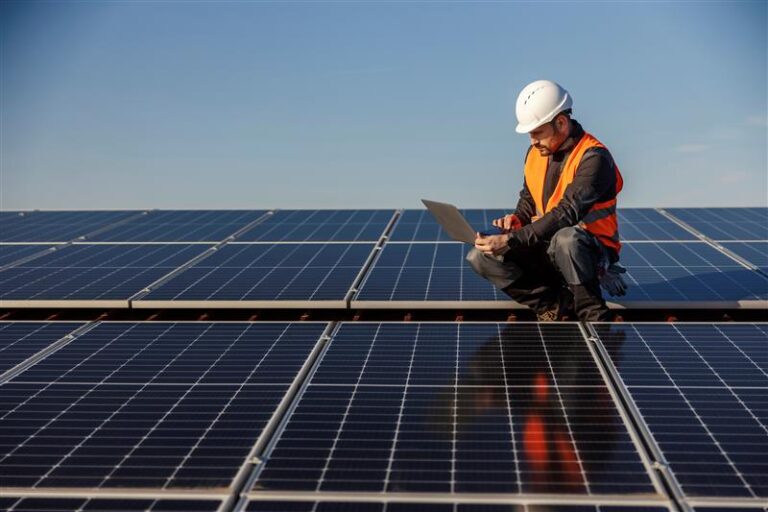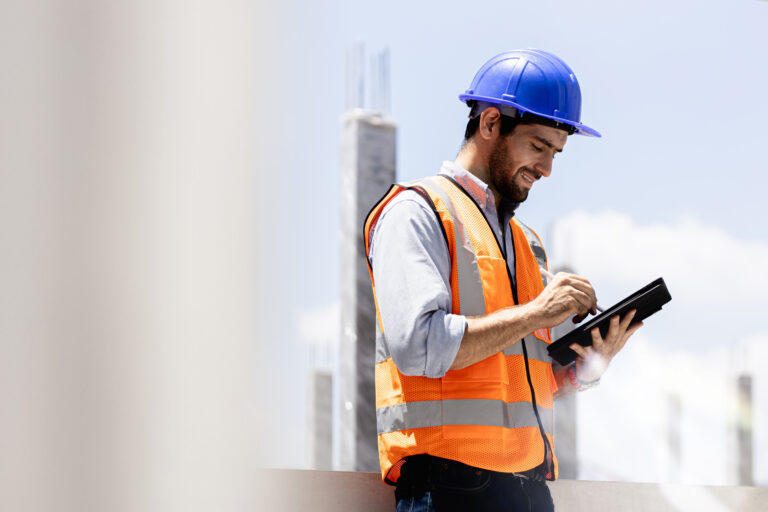Net zero 2050 is fast approaching and as the advance towards sustainability intensifies, organisations are increasingly looking for ways to reduce their environmental impact. For mid-market organisations navigating your journey to net zero, understanding how to integrate renewable energy and improve energy efficiency in buildings is crucial.
Energy Performance Certificates (EPCs) can play a key role, providing insight into the energy efficiency of a building and identifying improvements to reduce energy consumption and carbon emissions.
In this guide, we’ll explore the relationship between EPCs, renewable energy and energy efficiency, and provide practical tips on how you can benefit.
What is an Energy Performance Certificate (EPC)?
An Energy Performance Certificate is a document that assesses the energy efficiency of a building. EPCs are required for both residential and commercial buildings whenever they are built, sold, or rented. The certificate includes a rating, which ranges from A (most efficient) to G (least efficient), and provides recommendations on how to improve the building’s energy performance. For commercial properties, maintaining a high EPC rating can not only reduce energy costs but also increase the property’s market value.
A critical step in improving the EPC rating of your building is identifying areas where renewable energy solutions can be implemented. Utilising clean, renewable energy can significantly reduce a building’s energy consumption, helping organisations move toward net zero.
Renewable energy for sustainable buildings
Renewable energy is one of the most effective ways to reduce carbon emissions in commercial buildings. Integrating renewable energy sources like solar, wind, and geothermal power will create a sustainable building that lowers reliance on fossil fuels and reduces overall energy costs.
Here are a few renewable energy solutions that can transform your building:
- Solar power: Installing solar panels can provide a significant portion of a building’s electricity needs, limiting the use of fossil fuels and reducing dependence on the grid. It is one of the most popular renewable energy options for commercial buildings due to its scalability and because implementation costs are decreasing all the time.
- Wind power: For commercial buildings with a large area of land, wind turbines can provide clean electricity and complement solar power systems.
- Heat pumps and geothermal energy: Heat pumps and geothermal systems extract heat from the ground or air to provide heating and cooling for buildings. These systems are highly efficient and can drastically lower a building’s energy consumption, positively impacting its EPC rating.
How EPCs help in achieving sustainable buildings
An EPC doesn’t just assess current energy performance; it provides a roadmap for making buildings more sustainable. For organisations that want to achieve net zero, the recommendations within an EPC report offer valuable insights into changes that can be made for long-term energy efficiency.
To achieve a sustainable building, organisations should focus on the following aspects building fabric improvements, lighting and electrical upgrades, smart building technologies and renewable energy installation. Understanding top strategies for improving your building’s energy efficiency rating is key.
Benefits of having a more sustainable building
Embracing energy efficiency and renewable energy not only supports environmental goals but can also offer tangible benefits for your organisation, including:
- Cost savings: Reducing your energy consumption can offer significant cost reductions. . This is especially important in today’s fluctuating market where energy prices can be volatile.
- Compliance and future-proofing: Energy efficiency standards are becoming stricter for commercial buildings. By focusing on improving EPC ratings and adopting sustainable practices now, organisations can ensure they meet future regulations without costly retrofits later.
- Enhanced reputation: Companies that invest in renewable energy and sustainable practices can improve their reputation with customers, investors, and employees. In a world where consumers and stakeholders are increasingly valuing sustainability, this can be a critical competitive advantage.
Steps to make your building more sustainable
If you’re looking to enhance the sustainability of your commercial building, here’s a practical guide to get started:
- Assess your EPC rating: Conduct an EPC assessment or undertake an energy audit to understand your building’s current energy performance. Use the recommendations to identify the most effective improvements.
- Adopt renewable energy: Start exploring renewable energy options suitable for your building. Solar panels, wind turbines, or geothermal systems can all make a huge difference to your energy consumption and carbon footprint.
- Upgrade your building’s insulation: Improving insulation is a quick and effective way to reduce energy loss and improve the efficiency of your heating and cooling systems.
- Modernise systems: Ensure your heating, ventilation, and air conditioning systems are energy-efficient. Consider options like heat pumps that work well alongside renewable energy solutions.
- Monitor and optimise: Once upgrades are in place, use energy monitoring systems to track usage and optimise performance over time. Reinvest the savings from your energy efficiency programmes into further improvements, continually optimising and accelerating progress toward your net zero goals.
Conclusion
Transitioning to a more sustainable building through renewable energy solutions and improvements in energy efficiency is not only a step toward achieving net zero but also a strategic move for future-proofing your organisation. By focusing on upgrading your EPC rating and integrating sustainable practices, you can not only meet compliance with MEES, but also cut your energy costs, reduce your environmental impact, and enhance the value of your property.
At Zenergi, we support organisations in accelerating their journey to net zero by helping them understand their energy usage and providing guidance on renewable energy solutions that align with their net zero goals. Sustainable building practices are more than just a trend—they are essential for a greener, more energy-efficient future. Ask us for advice on how you can start to improve your building.















